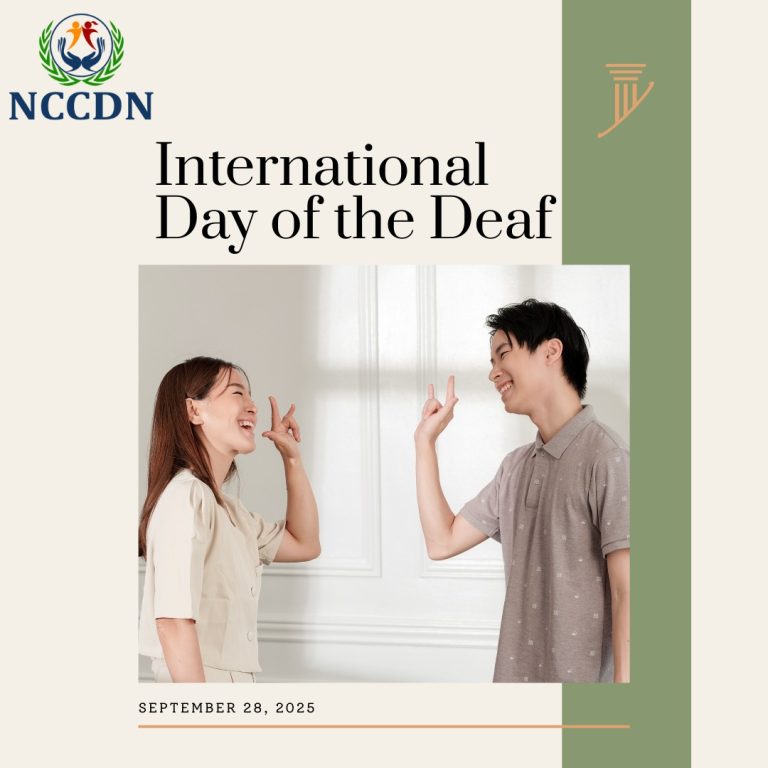Fostering Growth and Health: Celebrating Deafness on International Day of the Deaf

This year, on International Day of the Deaf, the New Center for Child Development and Nutrition is making quite the statement. This isn’t your run-of-the-mill health facility—it’s a forward-thinking space that’s shaking up how we support children with hearing impairments. The center’s approach blends nutrition, developmental care, and deaf-friendly programs, pushing beyond the old-fashioned idea that deafness is something to “overcome.” Instead, they recognize and value it as a distinct identity. That’s a game-changer, honestly. This milestone event shines a spotlight on diversity and reinforces a key principle in any progressive organization: every child, regardless of ability, should have the resources and support to succeed—emotionally, physically, and socially. And that’s not just good practice; it’s good business.
International Day of Deaf: Building a Future Where Deaf Children Thrive, Not Just Survive
Historically, deaf children have encountered significant challenges—not just in securing quality education or healthcare, but also in being recognized for their strengths, not their perceived limitations. Too often, society defaults to viewing deafness as a barrier instead of acknowledging its richness as a cultural identity.
The New Center for Child Development and Nutrition is actively changing this perspective. Deafness, in their view, isn’t simply an obstacle; it’s a source of community, language, and resilience. The center’s model integrates early childhood interventions with immersive sign language and inclusive educational environments, offering a foundation where deaf children are positioned to excel, not just get by.
We understand that early developmental support is crucial. Pairing that with robust nutrition and emotional care, the center sets a new standard—one that prioritizes the whole child: body, mind, and spirit. This strategy isn’t just progressive; it’s proof that when organizations focus on comprehensive, inclusive care, the results speak for themselves.
Nutrition as a Cornerstone of Holistic Deaf Child Development
Let’s cut to the chase—nutrition isn’t just a sidebar issue for young kids, especially those with hearing impairments. The data backs it up: children with hearing loss have a higher risk of malnutrition, whether it’s because mealtimes are challenging, parents lack resources, or the support network just isn’t there.
That’s why this center isn’t offering one-size-fits-all solutions. Instead, they deliver targeted nutrition programs designed to educate families, equip caregivers, and address each child’s specific needs. When children receive adequate nutrition, the results are clear: stronger engagement in learning, improved communication, and more active participation.
It’s a comprehensive system—they’re not just tracking calories, but also conducting health screenings, creating diet plans, and monitoring developmental progress. In short, this holistic approach doesn’t just close gaps; it redefines what accessible care looks like, restoring agency.
Inclusive Education: Language, Culture, and Cognitive Development Intersect
Here’s the thing—Early language access is absolutely foundational for any child, and for deaf children, getting sign language from the get-go changes everything. The center’s education model makes this a top priority, weaving sign language into every part of the curriculum: play therapy, reading, you name it. This isn’t just about checking boxes; it’s a strategy that sparks cognitive development, strengthens cultural identity, and supports social-emotional growth.
What’s especially worth noting is the bilingual environment. Deaf children aren’t just included—they’re given the same opportunities to build language proficiency as their hearing peers. Parents—whether they’re deaf or hearing—are brought into the fold as active partners, not spectators. That’s a serious value-add, both for the family unit and the broader community.
Bottom line? This approach doesn’t treat deafness as an obstacle. Instead, it leverages it as a unique asset, building a community where everyone benefits from deeper connection and mutual understanding. It’s a smart, inclusive move that sets up all stakeholders—kids, parents, and educators—for long-term success.
Conclusion
Let’s get down to it—the New Center for Child Development and Nutrition isn’t just another facility on the map. It’s a strategic move that could actually change the game for deaf children. We’re finally seeing health, development, and inclusion come together, all while genuinely respecting deaf culture and language. That’s a smart way to operate.
With International Day of the Deaf in the spotlight, it’s clear: inclusion doesn’t just happen by accident. It has to be part of every policy, every program, every single service. That’s how you build something sustainable.
This center is more than a standalone investment; it’s a blueprint for what’s possible. Imagine a future where every child—regardless of hearing ability—has the support to thrive, communicate with confidence, and be treated with real dignity. If we do this right, this isn’t just a launch; it’s the start of a movement that relies not just on listening, but on commitment, empathy, and collective effort. That’s progress worth backing.
We hope you like the article. For reading more articles and blogs, click on the link https://nccdn.org/. You can follow us on Facebook, LinkedIn, Twitter, and Instagram.
RECENT POST
- October 10, 2025
- September 29, 2025
- September 27, 2025
- September 27, 2025
